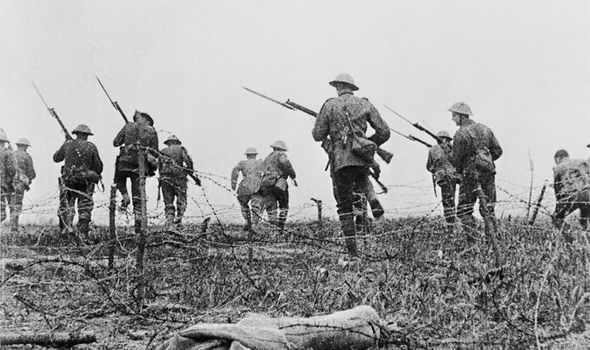One hundred years ago, on July 1, 1916, the British Army attacked German positions along the River Somme in France. By the end of the day, 19,240 British soldiers lay dead, nearly twice that number wounded. Most were killed in the first hour of the attack, many within the first minutes. The campaign would continue until November, 1916.
Out of the horror and carnage, the deadliest day in British military history, came the saga of Middle Earth. J.R.R. Tolkien served as a battalion signals officer with the 11th Lancashire Fusiliers in the Picardy region of France for four months until he was evacuated to a field hospital.
Joseph Loconte writes in the New York Times:
The descriptions of battle scenes in “The Lord of the Rings” seem lifted from the grim memories of the trenches: the relentless artillery bombardment, the whiff of mustard gas, the bodies of dead soldiers discovered in craters of mud. In the Siege of Gondor, hateful orcs are “digging, digging lines of deep trenches in a huge ring,” while others maneuver “great engines for the casting of missiles.”
On the path to Mordor, stronghold of Sauron, the Dark Lord, the air is “filled with a bitter reek that caught their breath and parched their mouths.” Tolkien later acknowledged that the Dead Marshes, with their pools of muck and floating corpses, “owe something to Northern France after the Battle of the Somme.”
In a lecture delivered in 1939, “On Fairy-Stories,” Tolkien explained that his youthful love of mythology had been “quickened to full life by war.” Yet he chose not to write a war memoir, and in this he departed from contemporaries like Robert Graves and Vera Brittain.
In the postwar years, the Somme exemplified the waste and futility of battle, symbolizing disillusionment not only with war, but with the very idea of heroism. As a professor of Anglo-Saxon back at Oxford, Tolkien preferred the moral landscape of Arthur and Beowulf. His aim was to produce a modern version of the medieval quest: an account of both the terrors and virtues of war, clothed in the language of myth.
David Wilcock, writing in the Independent, describes some others participants of the battle who would make their mark on the 20th Century:
Adolf Hitler: The megalomaniac Nazi dictator was injured fighting for the German Empire on the Somme. Over the years there has been speculation that he suffered a wound to his genitals as well as the leg wound suffered while serving with a Bavarian unit, which gave rise to the legend that he only had one testicle. In a postcard unearthed in 2012 the then 27-year-old soldier wrote of his intention to “report voluntarily for the field immediately” from the hospital in Munich where he was recovering.
Ralph Vaughan Williams: The composer whose work The Lark Ascending is frequently voted Britain’s most popular piece of classical music. He enlisted as a private in the Royal Army Medical Corps on New Year’s Eve, 1914, the same year he produced the work. He was aged 42. His friend, fellow composer George Butterworth, was killed on the Somme on August 5 1916.
Otto Frank: Anne Frank’s father was the only member of the family to survive the Holocaust. Born in Frankfurt he was drafted into the German Army in 1915 served on the Western Front for the rest of the war, earning promotion to Lieutenant. He moved the family from Germany to Amsterdam in 1933 after Hitler’s rise to power and increasing violence and discrimination against Jews, even those who had put their lives on the line for their country.
Siegfried Sassoon: As a second lieutenant with the 1st Battalion, Royal Welsh Fusiliers, war poet Sassoon witnessed the carnage of July 1 weeks after earning a Military Cross in a daring operation to rescue a soldier in No Man’s Land.
Robert Graves: A friend of Sassoon and a fellow war poet who served in the same unit, Graves was wounded in eight places on July 20 in a shell explosion. He was so badly hurt that his family were told he was dead and it was announced in the Times. He described his wartime experiences in Farewell To All That in 1929 and eventually died in 1985, aged 90.
Edmund Blunden: A poet contemprary of Sassoon and Graves, Blunden was physically uninjured by his war service but suffered from “shell shock”, now known as Post Traumatic Stress Disorder (PTSD) for the rest of his life. He described the Somme in works including Thiepval Wood.

